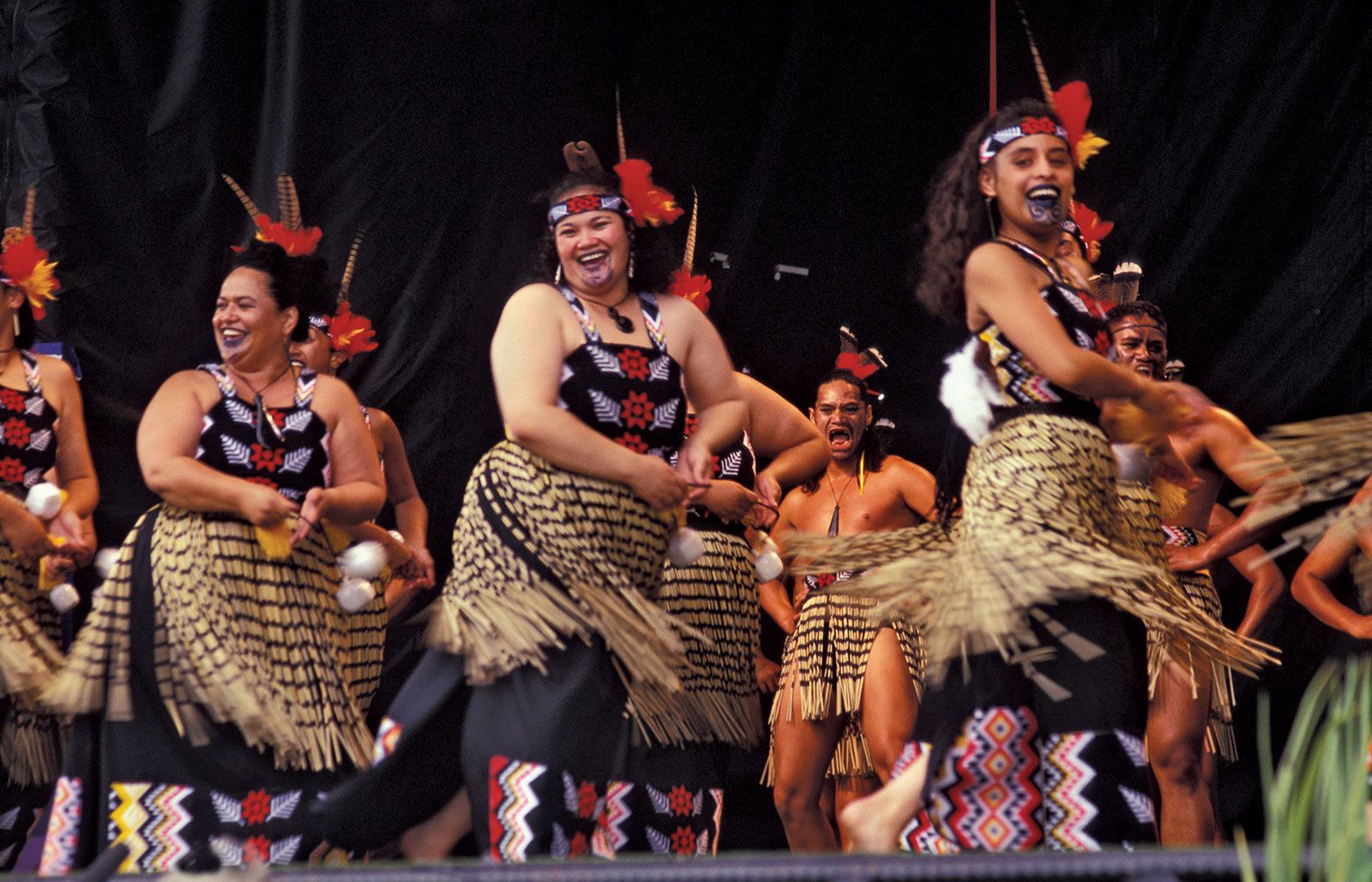From herbal tattoo ink to Manuka honey face masks, Maori culture and traditions are an integral part of New Zealand. While Maori culture was greatly affected by European colonialists arriving on its shores, recent efforts such as Whale Rider have given a boost to Maori heritage while the All Blacks rugby team continues its worldwide success.
Origins
Maori people migrated from Polynesian islands between 1250-1300. Over time they established a distinct culture with oral history and strong traditions of warfare; hunting seals and moas, building fortified villages (pa) and farming as their means of survival; carving figures into stone monuments for religious festivals as well as producing tattoos were among their activities.
Maori concept “mana” represents power and prestige. This can be earned through achievement such as winning a piece of land that had previously been in contention, or through association such as being related to someone with significant mana (for instance being his grandson). Respect for mana drives hierarchical relationships within Maori culture; these would often defend it from any potential challengers.
From its first contact in the early 1800s, European contact had a profound influence on Maori life, introducing Christianity, advanced technology and transport, English as a language and literacy. Inter-tribal wars broke out over muskets until their use was phased out completely in 1836.
Customs
Maori culture contains numerous traditions that should be respected and preserved, known as Tikanga (customary behaviour). Tikanga covers Maori traditions, ceremonies and practices unique to them such as hangi (traditional cooking method where meat and vegetables are slowly cooked underground) or intangible elements like Kapa Haka performance and whaikorero oratory.
Maori genealogy has traditionally been traced with the help of a whakapapa rakau – a staff made of wood with knobs representing different generations – but today their culture encompasses modern arts such as carving, weaving, Kapa Haka and Moko (Tattooing).
Te Reo Maori (the Maori language), plays an essential part of Maori culture. With its highly structured grammar and consistent rules of pronunciation, its significance cannot be overstated. Herman Melville immortalized one such speaker – Queequeg from Te Reo Maori – in his classic novel Moby Dick. This was an early account of Maori culture and mythology.
Language
Maori culture is extremely holistic, and their spiritual beliefs center around ancient legends that often stretch time (difficult for non-Maori to comprehend). Maori are dedicated to honoring, respecting and sharing responsibility for the land they inherited tangata whenua.
Many Maori arts such as carving, weaving, kapa haka and whaikorero are practiced today by people following in the footsteps of their tipuna (ancestors) while creating exciting new techniques and forms.
Tattoos, or moko, are integral symbols of identity for Maori people and can tell an intricate tale when read properly. Their intricate designs tell a narrative which can be understood by anyone with enough eyesight.
Maori have long had a legacy of fighting for their land. Their ancestors were among the first indigenous inhabitants (tangata whenua) of Aotearoa (New Zealand), fighting back against British colonisation with campaigns such as Waikato War. Today they continue their struggle for tribal rights by advocating land development projects and supporting Kingitanga, an initiative to reinstate Maori kingship. They have even established their own legal system through Waitangi Tribunal to provide limited redress for historical injustices.
Food
As Maori culture places great value on seafood, kai moana (food of the sea) plays an integral part. Paua, abalone and sea eggs are considered delicacies while freshwater crayfish, such as koura or freshwater crabs (which look more like giant shrimp than lobster), must-trys include New Zealand Greenshell mussels as well as oysters.
Maori people enjoy eating various types of foods, but their traditional method for cooking, the hangi, remains popular. This process entails digging a pit, heating stones in an open fire until white-hot, placing baskets of food atop it all, then covering everything up with earth for several hours to finish off cooking.
When meeting Maori people, it’s appropriate to shake hands but avoiding offering your arm for an embrace is best. Instead, greet them with a hongi by pressing noses together as a symbol of friendship – this gesture symbolizes their tradition of hospitality known as manaakitanga and can even be experienced during a powhiri, the ceremonial welcome at maraes.
Tattoos
One iconic symbol of Maori culture are their facial tattoos known as moko. This ritual once solely performed by male members communicated their lineage, tribal affiliations and status within their tribe; also symbolizing war exploits or other significant events of their lives. Before the arrival of Europeans these markings were created by carving wooden chisels into skin before using natural pigments – however today this artform continues on a smaller scale for women as well.
Maori tattoos often reflect proverbs or tributes to ancestors, while Maori culture is rich and fascinating to explore. One popular design among them is the koru loop, symbolizing growth and strength. If you meet one, ask about their tattoos (ta moko), as this can provide an invaluable way of learning more about their history and culture.
Maori peoples migrated from Polynesia in waves using ocean-going canoes called waka. Arriving sometime around 13th Century, they settled and gradually formed highly territorial islands known as Aotearoa or “The Land of the Long White Cloud.” Reputable warriors among them, they never allowed colonial forces to defeat them.
